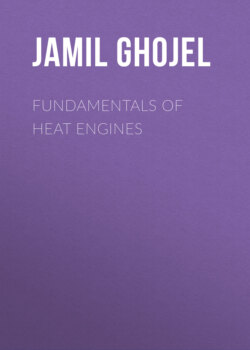Читать книгу Fundamentals of Heat Engines - Jamil Ghojel - Страница 16
1.1.1 Definitions
ОглавлениеParticle. A conceptual body of matter that has mass but negligible size and shape. Any finite physical body (car, plane, rocket, ship, etc.) can be regarded as a particle and its motion modelled by the motion of its centre of mass, provided the body is not rotating. The motion of a particle can be fully described by its location at any instant in time.
Rigid body. An assembly of a large number of particles that remain at a constant distance from each other at all times irrespective of the loads applied. To fully describe the motion of a rigid body, knowledge of both the location and orientation of the body at any instant is required. Gas turbine shafts are rigid bodies that are rotating at high speeds. The reciprocating piston‐crank mechanism in piston engines is a complex system comprising rotating crank shaft and sliding piston connected through a rigid rod describing complex irregular motion.
Kinematics. Study of motion without reference to the forces causing the motion and allowing the determination of displacement, velocity, and acceleration of the body.
Kinetics. Study of the relationship between motion and the forces causing the motion, based on Newton's three laws of motion.
